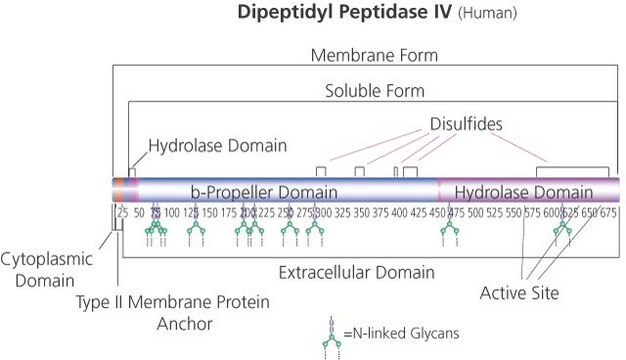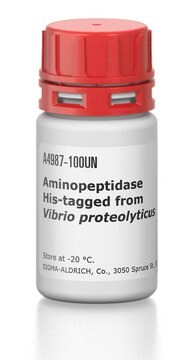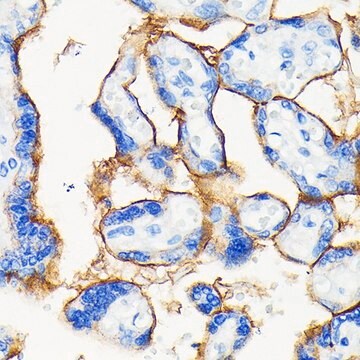D3321
Dipeptidyl Peptidase VII human
recombinant, expressed in Sf9 cells
Sinônimo(s):
DPP7, Quiescent cell proline dipeptidase
About This Item
Produtos recomendados
recombinante
expressed in Sf9 cells
Nível de qualidade
forma
solution
atividade específica
≥1,500 units/μg protein
≥1500 units/μg protein
peso molecular
89.1 kDa
doença(s) relevante(s)
diabetes; cardiovascular diseases
Condições de expedição
dry ice
temperatura de armazenamento
−70°C
Aplicação
Ações bioquímicas/fisiológicas
propriedades físicas
Definição da unidade
forma física
Palavra indicadora
Danger
Frases de perigo
Declarações de precaução
Classificações de perigo
Eye Dam. 1 - Repr. 1B - Skin Corr. 1C
Código de classe de armazenamento
6.1C - Combustible acute toxic Cat.3 / toxic compounds or compounds which causing chronic effects
Classe de risco de água (WGK)
WGK 2
Certificados de análise (COA)
Busque Certificados de análise (COA) digitando o Número do Lote do produto. Os números de lote e remessa podem ser encontrados no rótulo de um produto após a palavra “Lot” ou “Batch”.
Já possui este produto?
Encontre a documentação dos produtos que você adquiriu recentemente na biblioteca de documentos.
Nossa equipe de cientistas tem experiência em todas as áreas de pesquisa, incluindo Life Sciences, ciência de materiais, síntese química, cromatografia, química analítica e muitas outras.
Entre em contato com a assistência técnica









